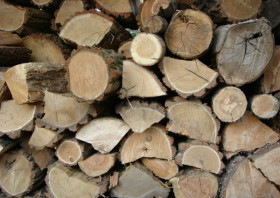Schedule a Fireplace Inspection for Valentine’s Day
Many homeowners leave their hearths untouched throughout the year, lighting it only for holidays and special occasions. Valentine’s Day is one of those days that inspires homeowners to ignite their otherwise unused fireplaces. Before you light your fireplace to strike a romantic mood this Valentine’s Day, schedule a chimney sweeping and inspection.
Inspections for Pellet Stoves and Wood-Burning Fireplaces
A chimney sweeping and inspection is crucial if you haven’t lit your fireplace since the last fire-burning season. For wood- and pellet-burning appliances, highly flammable creosote builds up in your chimney each time you burn a fire. When it builds up deep enough, a burning ember can cause the creosote to suddenly ignite. That’s why an annual chimney sweeping and inspection is recommended to prevent a dangerous and damaging chimney fire.
Your chimney inspection also will identify any damage that could lead to a chimney fire or any other problems with your chimney. During your inspection, your chimney sweep will locate any cracks or weaknesses in the chimney, blockages in the chimney or portions of the chimney that aren’t working. You’ll be able to rest assured that your chimney is safe to use this Valentine’s Day.
Inspections for Gas-Burning Appliances
Your gas-burning fireplace also needs a cleaning and inspection before you light it this Valentine’s Day! While gas-burning fireplaces burn cleaner than wood-burning fireplaces and don’t deposit creosote in the chimney, dirty gas fireplaces can cause plenty of problems, too. Dust or debris within the fireplace can cause the fireplace to malfunction or to fail to light entirely. A malfunctioning fireplace also can lead to a buildup of dangerous carbon monoxide in your home.
A cleaning and inspection of your gas-burning fireplace clears away any debris that could keep your fireplace from igniting this Valentine’s Day, and it ensures that all of the working components of your gas fireplace are functioning properly. Even though the fireplace for your gas chimney won’t accumulate creosote, it should still be cleared of corrosive soot and inspected for cracks or other damage that could render it unfit.
Don’t let a dirty or malfunctioning fireplace — or worse, a chimney fire — interfere with your romantic Valentine’s Day plans. Make sure that your chimney is safe to use and ready to strike the romantic mood for your Valentine’s Day. Call to schedule your chimney sweeping and inspection with Your Chimney Sweep today!

